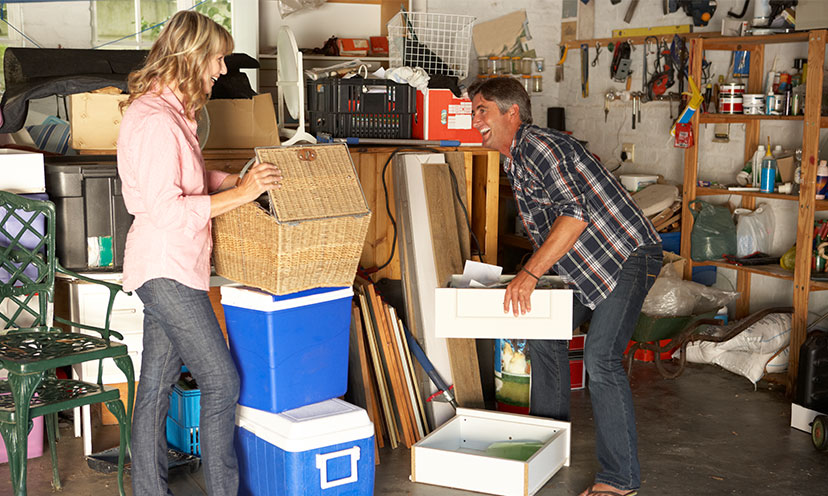Facebook Marketplace
Honestly, when Facebook released its
Marketplace platform, many were surprised and skeptical of it. Years later, that skepticism has been squashed as Marketplace has become one of the major secondhand exchange platforms online today.
Why it’s great: Facebook mitigates the trust issue that usually exists when buying or selling from random people online by having all of the listings attached to people’s already established Facebook profiles.
Best practices: You can toggle your search to adjust the location and the radius of how far you want to search within (five miles, ten miles, twenty miles…). Make sure to search locally so you can meet in-person to view or show the product.
If you’re selling, make sure to add a seller’s description so that people know you’re a real, sane person.
The other nice thing about Facebook is that you can join local groups specifically geared towards buying and selling secondhand goods. Make sure to search for and join those to potentially get even better deals.
Letgo
Letgo is a great platform that’s grown significantly in the past couple of years. It’s based on the premise that we all have too much stuff and can benefit from selling some of it, and benefit someone else (the buyer) in the process.
Why it’s great: All you need to do to post a listing is snap a quick photo (or two, the more the better) with your phone, add a description, and within minutes you’ve listed your product. So easy.
Best practices: Letgo buyers and sellers also benefit from Letgo’s native ratings and reviews system. Before you buy or sell to someone, you can take a look at their profile to get a sense of how any past exchanges went. Users also benefit from Letgo staff constantly monitoring for fake profiles or scammers. Because it’s an app, it’s much harder to scam people (though still possible, so be sure to follow their
tips for safe exchanges).
Poshmark
What if you could buy the clothes of Instagram influencers right from their closet? That’s the premise behind
Poshmark, an app-only marketplace that’s made for modern day and not stuck in the past (ahem, Craigslist).
Why it’s great: Poshmark successfully makes buying secondhand clothing fashionable, as it should be. The app experience isn’t at all what we’re trained to think about buying someone else’s clothing (i.e., scouring clothing racks in musty stores). On the contrary, Poshmark enables its buyers and sellers to associate their clothes with the top brands they’re from and showcase them in a glamorous way.
Best practices: The biggest seller profiles on Poshmark are curating a brand as much as they are selling secondhand fashion. You’ll have a better chance of selling your product if you photograph it well and even show it being worn.
It’s easy being a buyer and you’re pretty well protected. Technically, Poshmark doesn’t pay out to sellers until the product is in the buyer’s hands. Buyers have a three day period after shipping to confirm that you’ve received your product and everything is as expected.
eBay
eBay is the original online, realtime marketplace. Out of all of the options listed so far, eBay has the largest variety and selection of items. Not only can buyers successfully scourge for discontinued, rare, refurbished, and secondhand items, you’ll also be able to find great prices (and bids) on new items as well.
Why it’s great: Search for most anything on eBay and you’ll likely find it, or at least a suitable supplement. It’s also a great resource for sellers to get a sense of the pricepoint for used and limited availability items. If you’re really looking for bargains, the ability to auction on certain items can save you some dough.
Best practices: Make use of their great ratings system. Top sellers have thousands of ratings and reviews and are posted on the right hand side of every listing. Be cautious of sellers with little or reviews.
If you’re a new seller, build up your profile with low risk, inexpensive items to start building positive reviews.
OfferUp
OfferUp is
Letgo’s younger sibling. It’s a platform that aims to bring yard and garage sales to the internet. They have an app available on both iOS and Android phones, but you can also conveniently browse and shop in a traditional browser.
Why it’s great: OfferUp is very visual, so you get a good look at what you’re getting from the listings. Its interface nicely creates a very community feel.
Best practices: OfferUp does have seller ratings available, though because it’s a younger platform that may not help you too much on everything. The platform is pretty intuitive to use and navigate, just use typical common sense practices when conducting transactions (i.e., shop locally, meet in a public place during the day).

